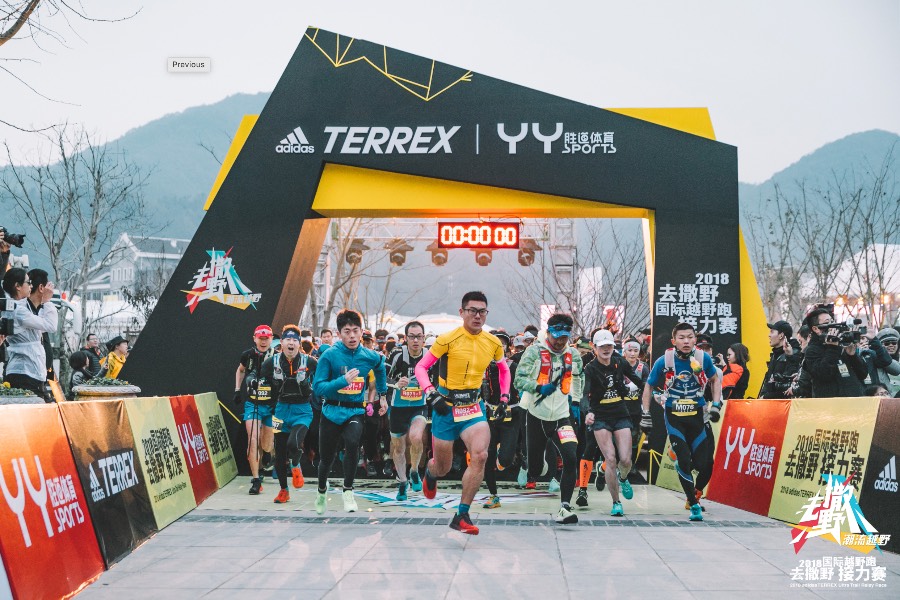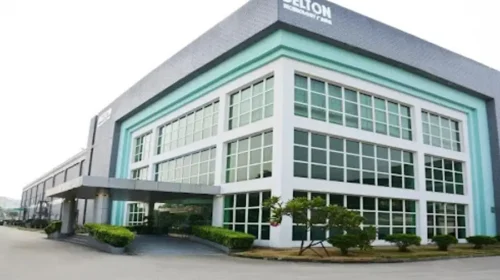Yue Yuen stumbles on high labor costs, geopolitical uncertainty

The shoemaker’s profit fell 24% in the first quarter on falling margins, as it continues taking preemptive hedging measures against geopolitical risk
Key Takeaways:
- Leading shoemaker Yue Yuen’s revenue grew 1.3% in the first quarter, but its profit dropped 24.2%
- Rising labor costs in Southeast Asia are squeezing the company’s margins as it diversifies beyond China to hedge against geopolitical risk
By Lee Shih Ta
“Made-in-China” sneakers are continuing to trek across the Pacific to U.S. consumers, even as key changes in the supply chains behind their trans-continental journey shift dramatically. Despite receiving some temporary relief in the China-U.S. tariff wars from the two countries’ recent trade deal, shoe giant Yue Yuen Industrial (Holdings) Ltd. (0551.HK) is hardly breathing easy. The company recently reported its gross margin and profit both fell sharply in the first quarter, highlighting some of the challenges original equipment manufacturers (OEMs) are facing as their supply chains shift around them.
Yue Yuen, whose customers include global giants like Nike, Adidas and Puma, managed to eke out some revenue growth in the first quarter, with the figure up 1.3% year-on-year to $2.03 billion. But its profit sprinted downward, sinking 24.2% to $75.8 million. Its gross and operating profit margins also suffered, with the former falling by 2.2 percentage points year-on-year to 22.9% in the quarter, and the latter down by a similar 1.9 percentage points to 5.4%.
The company blamed escalating turbulence in the global economy for its rising unit costs, and added its overall efficiency is taking a hit from uneven capacity utilization across different factories, surging labor costs and delays in a new factory opening.
Rising costs, client conservatism
Among the many factors eroding its margins, rising labor costs in countries such as Indonesia and Vietnam are having some of the most significant impact on Yue Yuen. The company’s Indonesian factories raised wages earlier this year, according to a BofA Securities note. Despite gradually passing on the higher costs to clients in the second quarter, the company’s gross profit margin will remain under pressure in the near term and is expected to stay in 18% to 19% range, down significantly from 2024 levels, BofA said.
Yue Yuen’s second-quarter orders have been relatively stable so far, BofA added, but management is concerned about shipments falling year-on-year in the third quarter due to both a high base from last year and clients becoming more conservative with their inventory strategies. That could dampen the company’s momentum over the short term as its clients become more cautious in their ordering at a time when demand from the important China market has been slow to recover.
The company is also facing external pressure driven by geopolitical uncertainties. Facing such headwinds, Yue Yuen began redistributing its capacity as early as 2018 in a bid to diversify its manufacturing base, with a particular focus on goods bound for the U.S. The company has lowered the share of its products made in China for export to the U.S. from 85% at an earlier peak to just 15% now. On a geographic basis, shoes produced in Indonesia, Vietnam and China accounted for 54%, 31% and 11% of its total shipments in 2024, respectively, showing the center of gravity for its manufacturing has shifted to Southeast Asia.
The reality is that OEMs like Yue Yuen have always been “nomads” when it comes to where they set up their shops. The company was founded in 1988, but its parent, Pou Chen Corp. (9904.TW), has roots dating back to 1969 with its establishment in Taiwan’s Zhanghua county. It started out producing and exporting rubber shoes and later shifted its focus to designing and manufacturing sneakers and casual footwear.
Seeking profits while diversifying risk
In the 1980s, as Taiwan tightened its land and environmental protection laws and regulations and local labor cost rose, Pou Chen looked for new, more cost-effective places to produce. It initially set its sights on Southeast Asia, but later pivoted to the Chinese mainland as the government began allowing private enterprises and made other market-oriented reforms. It was part of a larger tide of Taiwan companies that “moved west” to the mainland.
Officially based in Hong Kong, Yue Yuen went public on the Hong Kong Stock Exchange in 1992 and expanded into the mainland as a Hong Kong-funded company. It built shoe factories in nearby Pearl River Delta cities such as Dongguan and Huizhou in Guangdong province, and in Kunshan, near Shanghai, in Jiangsu province. As its output grew and it became more active on the mainland, Yue Yuen quickly expanded by landing premier brands such as Nike and Adidas as their most important OEM partner in Asia. At its peak, it was churning out more than 300 million pairs of athletic shoes every year.
The company has a publicly listed subsidiary, Pou Sheng International (3813.HK), in charge of the retail sales and distribution of sportswear products on the mainland and in Southeast Asia. In terms of division of duties, Yue Yuen is responsible for manufacturing, while Pou Sheng handles sales. The pair have built out a manufacturing and sales network spanning China, Vietnam, Indonesia and Cambodia.
While its geographic diversification may help to protect it against geopolitical risks, the move is unlikely to produce cost advantages in the near term. To the contrary, it might lead to higher operating costs and lower efficiency as new facilities ramp up and labor costs rise. Other risks remain as well, including changing labor market conditions and tariff dynamics in Southeast Asia, as well as unclear prospects for China’s economic recovery and growing conservatism among its clients.
Yue Yuen’s stock has hovered in the HK$12 to HK$18 range for most of the last five years and currently trades at feeble price-to-earnings (P/E) ratio of around 6.5 times, well behind peers like Stella International (1836.HK) at 10.3 times, and Rich Peace (9910.TW) at 20.8 times, speaking to concerns about its diversification pains and broader outlook.
Despite solid fundamentals and strong connections with established brands, the company seems to lack growth potential at the moment – especially on its bottom line – and has yet to reveal any new steps it might take beyond waiting for market conditions to improve and orders to increase. While it’s certainly no high-tech maven, perhaps it might explore breakthroughs with digital transformation, automated manufacturing or technological upgrades to win back investors.
To subscribe to Bamboo Works weekly free newsletter, click here




